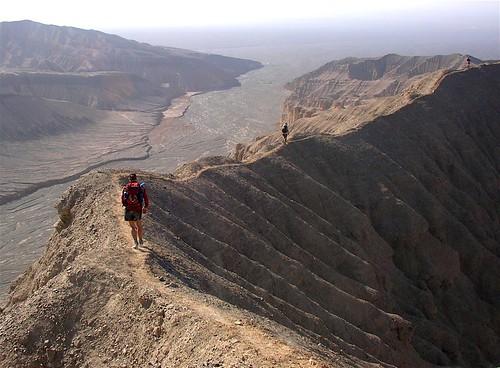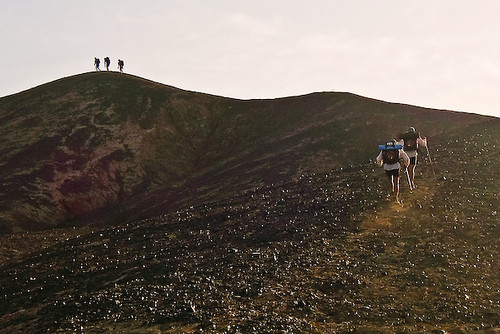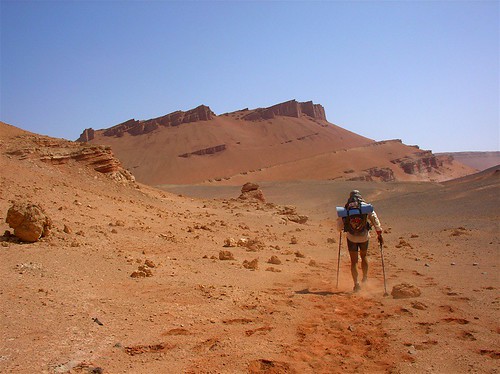 When I wanted to bring a camera to the Southern Traverse, an expedition length adventure race in New Zealand, my teammates were against it. They were worried that we would waste time having to stop to take photos. I told them that we didn’t need to stop to take photos and that the camera would hardly impact on our race performance. Well, carried a little point-and-shoot and not only did my teammates enjoy the photos, but I also managed to have some of the shots published.
When I wanted to bring a camera to the Southern Traverse, an expedition length adventure race in New Zealand, my teammates were against it. They were worried that we would waste time having to stop to take photos. I told them that we didn’t need to stop to take photos and that the camera would hardly impact on our race performance. Well, carried a little point-and-shoot and not only did my teammates enjoy the photos, but I also managed to have some of the shots published. If you have an interest to take some pictures in your next adventure race, I may have some advice to help you out.
 Discuss it with your teammates first
Discuss it with your teammates firstYou’ll need to discuss how heavy a camera you are willing to carry, and who is going to do the shooting. When shooting, I generally tell my teammates to ignore me, unless I call to them to look my way, and do nothing else (like giving me the ‘V’ for victory symbol). My teammates were even willing to take some of my load so that I can move quicker into position to shoot. You can even discuss what color uniform looks good on film (hint: wear red).
Get A Rugged, Lightweight, Water- Resistant Camera
Your camera will be bashed around, get dirty, and probably get wet. It may not survive. These days, a number of water-resistant, lightweight point-and-shoots are available with enough megapixels to have your shots published as a full page spread.
 Know Your Camera
Know Your CameraBe familiar with the controls, performance and various scene modes of the camera. If you are using a point and shoot, your control over your camera is limited. Leave all the automatics on – Program mode, Auto focus, Auto exposure, Auto ISO, etc. I would also suggest turning the flash on and leaving it on. The flash will work within a range of about 10 feet, outside of this, it’s just wasted energy, but you won’t have the time to manually turn the flash on and off during the race. In addition to the night, the flash will also be useful in filling in shadows in harsh daylight conditions.
Keep Your Camera Handy
It’s no use having your camera in your pack, because you will miss shots while you decide whether or not it’s worth the effort to get the camera out of the pack. I’ve been there. A camera holster or pouch works best, and you can fasten it to your belt, or backpack shoulder strap – somewhere quickly and easily accessible.
 Think Composition
Think CompositionTry shooting from unusual angles, called POV (Point of View) shots. Get down low to shoot footprints in the sand, or of your teammates as they jump over you, or hold the camera up over your head for a quick self portrait.
 Anticipate The Action
Anticipate The ActionYour team is not going to stop, so look ahead for photo opportunities. When you see one, quickly run ahead into position. Regulate your breathing, and steady your camera. Get some shots of your teammates as they move towards you. Wait for your teammates or direct them into ideal position for the key shots. Continue shooting your teammates as they move away. Then run to catch up!
Shoot Early
Take your pictures in the morning of the first day, or if it is a stage race, every morning. Not only is the light is better, but you will be fresher, more alert for photo opportunities and have more energy to get the shots.
 Shoot, and keep shooting
Shoot, and keep shootingShoot the pre-race briefing, shoot the equipment check, shoot the race volunteers. Shoot everything from the before the race, to the post race party. You will have a more rounded portfolio and a better picture story to show.
All photos taken with a Pentax Optio 43WR whilst participating in The Gobi March 2005.
From top: Racing The Planet. I ran ahead of my teammates and waited for them to run up to the race organizer's logo to get this shot;
The Long Road Ahead. A POV shot I got holding my camera at knee level whilst running and being towed by my teammate on a bungy towline;
The Flaming Mountains. Dust in the air as my teammates negotiate a 6 foot jump out of a slot canyon;
Disco Ridge. Competitors run along a knife-edge ridgeline during the race;
The Chase. Getting the shot early in the morning on day 3 of the race;
Running in the Desert. Getting a shot of my teammate as he leaves footprints in the desert sand.

No comments:
Post a Comment